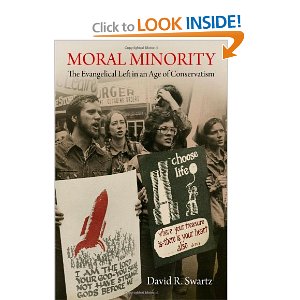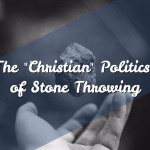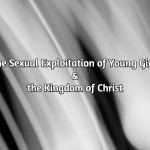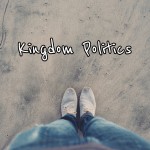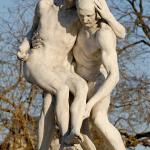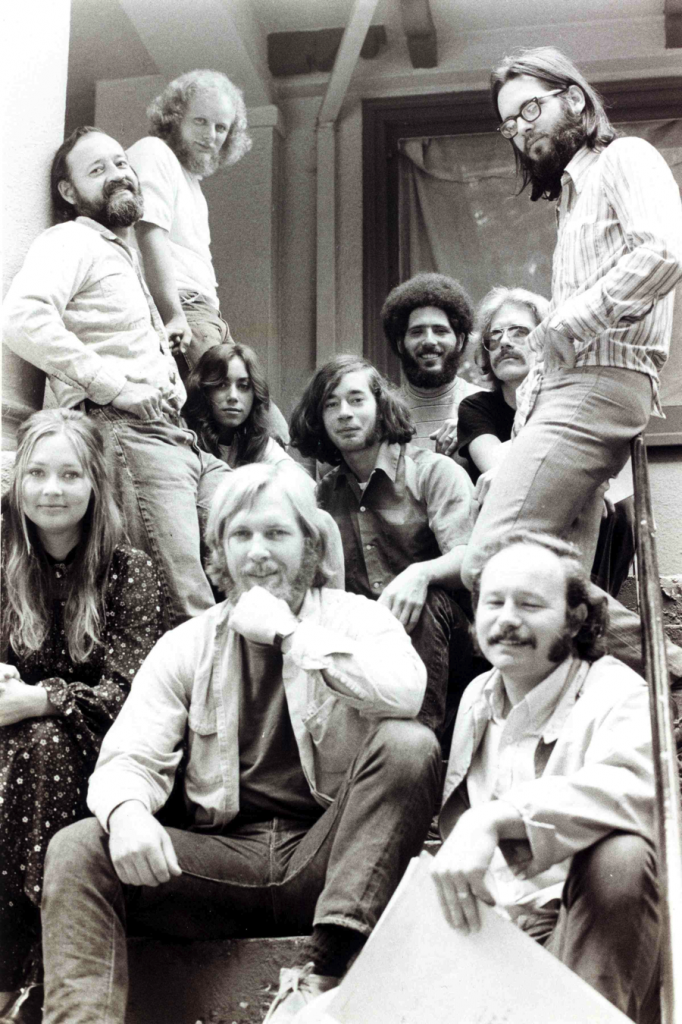
The following is a guest article, written by David Swartz. He is a Mennonite, historian, and a professor at Asbury University. His new book is called Moral Minority: The Evangelical Left in an Age of Conservatism.
—————————————————-
When I tell people about my recently released book Moral Minority: The Evangelical Left in an Age of Conservatism, I sometimes get a snort in response: “The evangelical left? All three of them!?” This quip has some basis in reality. Polls from the election show that over 70% of evangelicals voted for Mitt Romney. The politics of Jesus appears to be thoroughly Republican.
But things are not entirely as they seem. That impressively high number counts only white evangelicals. Black evangelicals vote overwhelmingly Democratic. Latino evangelicals are about evenly split. And evangelical immigrants from around the world combine conservative theological and moral stances with progressive economic and foreign policy views in ways that defy the Western imagination. Limiting evangelical politics to the category of “white evangelicals” is rather misleading for a missionary-minded group that sees itself as part of a multiethnic, global communion.
Even reducing evangelical politics to the categories of Republican and Democrat is overly narrow. The evangelical left can’t be reduced to the Democratic Party, just as white evangelicalism can’t be reduced to the Republican Party. There are millions of evangelicals who vote for pro-life Republicans despite holding more progressive positions on poverty, capital punishment, and the environment. And there are many evangelicals who vote Democratic despite profound disagreement with the party’s pro-choice orthodoxy. The historical and global portrait of evangelicalism is of a group more politically creative than the electoral structures that try to contain them.
There is growing evidence that evangelicals may now be headed for less partisan identification. A 15 percent drop in Republican identification in the 2000s resulted in a mere 5 percent rise in Democratic affiliation, but a 10 percent jump for independence. Political scientist John Green called these new evangelical non-rightists “freestyle evangelicals.” Among them are Bill Hybels, pastor of the megachurch Willow Creek outside of Chicago, who has told the New York Times that he considered politics a path to “heartache and disappointment.” He envisioned a less partisan, but no less socially engaged path. “We have just pounded the drum again and again that, for churches to reach their full redemptive potential, they have to do more than hold services — they have to try to transform their communities,” Hybels said. “If there is racial injustice in your community, you have to speak to that. If there is educational injustice, you have to do something there. If the poor are being neglected by the government or being oppressed in some way, then you have to stand up for the poor.”
There is historical precedent for Hybels’ vision. Even as moderate and progressive evangelicals were marginalized by a hostile Democratic Party and left behind by an energized religious right, they were quietly transforming communities. In their efforts for racial civil rights in the 1960s, against the Vietnam War and civil religion in the 1980s, and against poverty and abortion in the 1980s, they engaged in significant social action—but mostly outside of electoral structures. Their political relevance goes well beyond marginal influence on the Democrats or Republicans. In more recent years, the evangelical left has helped to launch engagement around a broad array of issues—from African poverty to peacemaking to simple living—to which neither party pays much attention.
That’s what is so encouraging about the Election Day Communion movement that caught fire in the weeks preceding November 6, 2012. The event I attended in Lexington, Kentucky (among the 700 events in all fifty states), was a beautiful scene of young and old, black and white, Anabaptist and Reformed, and Republican and Democratic. Inside a combination thrift store/coffee shop, about 60 of us worshipped the “slaughtered lamb” whose power came not from politics, but rather from death on a cross. For about an hour, on this most partisan of evenings, we transcended the vitriol through prayer, worship, and the celebration of communion.
In its diverse composition, Election Day Communion reminded me of the broad evangelical spectrum represented in Moral Minority. In the book I sketch biographies of eight representative evangelicals, some famous, some you’ve never heard of: an evangelical titan who sought to shape culture, several black evangelicals pushing for civil rights, an antiwar activist, a progressive Republican (yes really!) senator, a third-way communitarian from Berkeley, a Peruvian who “spoke back” to American evangelicals about the importance of social justice, a Reformed activist who said Jesus was Lord of all creation, and an Anabaptist who promoted simple living.
Of all these figures, the third-way communitarian reminded me most of the Election Day Communion sensibility. Groups like the Post-Americans and the Christian World Liberation Front showed that spiritual communities could point to a new social order grounded in authentic relationships, faithfulness to Jesus Christ, egalitarian structures, and grass-roots activism. The way of Jesus, they said, transcends categories of right and left by establishing micro-communities of authenticity, peace, and justice. CWLF’s David Gill (now at Gordon Conwell Seminary) said, “Drop out? No, if that means withdrawal and disengagement. But yes, if that means joining with brothers and sisters in a common and unified witness and life-style radically other than the options thrown up by the world-system. . . . We must go beyond the system, creating a new politics built from the grassroots of the local church: our primary community.” Gill’s vision can help us reimagine our way out of today’s culture wars and lead us toward a more authentic, churchly politics of Jesus.
About the Book:
In 1973, nearly a decade before the height of the Moral Majority, a group of progressive activists assembled in a Chicago YMCA to strategize about how to move the nation in a more evangelical direction through political action. When they emerged, the Washington Post predicted that the new evangelical left could “shake both political and religious life in America.” The following decades proved the Post both right and wrong—evangelical participation in the political sphere was intensifying, but in the end it was the religious right, not the left, that built a viable movement and mobilized electorally. How did the evangelical right gain a moral monopoly and why were evangelical progressives, who had shown such promise, left behind?
In Moral Minority, the first comprehensive history of the evangelical left, David R. Swartz sets out to answer these questions, charting the rise, decline, and political legacy of this forgotten movement. Though vibrant in the late nineteenth century, progressive evangelicals were in eclipse following religious controversies of the early twentieth century, only to reemerge in the 1960s and 1970s. They stood for antiwar, civil rights, and anticonsumer principles, even as they stressed doctrinal and sexual fidelity. Politically progressive and theologically conservative, the evangelical left was also remarkably diverse, encompassing groups such as Sojourners, InterVarsity Christian Fellowship, Evangelicals for Social Action, and the Association for Public Justice. Swartz chronicles the efforts of evangelical progressives who expanded the concept of morality from the personal to the social and showed the way—organizationally and through political activism—to what would become the much larger and more influential evangelical right. By the 1980s, although they had witnessed the election of Jimmy Carter, the nation’s first born-again president, progressive evangelicals found themselves in the political wilderness, riven by identity politics and alienated by a skeptical Democratic Party and a hostile religious right.
In the twenty-first century, evangelicals of nearly all political and denominational persuasions view social engagement as a fundamental responsibility of the faithful. This most dramatic of transformations is an important legacy of the evangelical left.

